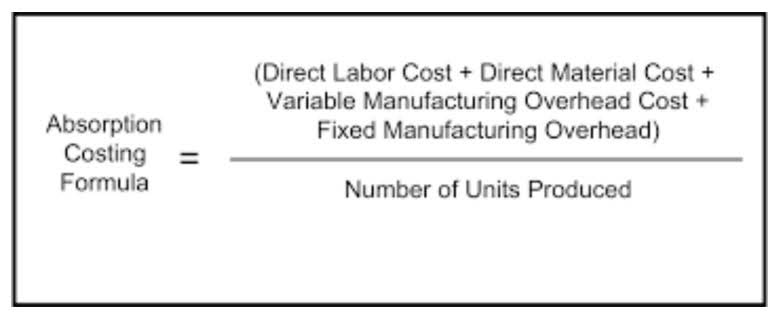
This holistic approach ensures that auditors do not view assertions in isolation but understand their collective impact on the financial statements’ integrity. The assertion of rights and obligations means that all assets and liabilities in a financial statement belong to the company issuing the statement. The company confirms that it has legal authority and control of all the rights to assets and obligations to liabilities highlighted in the financial statements. Testing for completeness includes reviewing accounts and reconciliation of payables to supplier statements. All financial information, including amounts, transactions, and disclosures, must be recorded at the correct amounts, using the proper calculations and estimations, without error or misstatement. Any errors discovered related to this assertion may lead to audit adjustments, restatements, or even concerns about internal control weaknesses.

Role of Assertions in Financial Audits
The assertion of accuracy and valuation means all figures presented in a financial statement are accurate and based on the proper valuation of assets, liabilities, and equity balances. This financial assertion states that the different components of a financial statement, such as assets, liabilities, revenues, and expenses, have been properly classified within the statement. Financial statement assertions are a company’s stamp of approval that the information in its financial statements is a true representation of its financial position. This includes any information on the balance sheet, income statement, and cash flow statement, and pertains to every asset and liability on these forms. These assertions relate to whether information about presentation and disclosure standards is complete and presentable. With that, ASB standard assertions are being applied by auditors in structured audits to uphold the credibility of financial reporting.
Create a free account to unlock this Template

All transactions that were supposed to be recorded have been recognized in the balance sheet financial statements. Describe substantive procedures the auditor should perform to obtain sufficient and appropriate audit evidence in relation to the VALUATION of X Co’s inventory. A. Confirms existence not completeness – the direction of the test is key here.

Presentation and Disclosure Assertion
These documents are useful not only for strategic planning and forecasting, but for auditors, who rely on the organizations they audit to be truthful. Completeness – this means that transactions that should have been recorded and disclosed have not been omitted. The affirmation states that the assets belong to the company; thus, the company has legal liability for paying the obligations. The following is a good explanation of the financial assertions as the pertain to ISA 135. For example, auditors may pick a sample of invoices and trace them assertions in audit to their posting in the ledgers. Also, it is important that auditors use audit sampling in a way that all sampling units in the population have a chance of being selected.

AP & INVOICE PROCESSING
Logically, the substantive procedures must now address all of these (high) risks. Assertions, in the context of auditing, are management’s implicit or explicit claims about the financial statements. They are assertions made by the company regarding the existence, completeness, valuation, rights and obligations, and presentation and disclosure of the reported financial information. Auditors rely on these assertions to evaluate the financial statements and express an opinion on their fairness.
Presentation and Disclosure
- Data analytics tools enable auditors to analyze large volumes of data quickly and accurately, identifying anomalies that might not be apparent through traditional methods.
- Risk of material misstatement is the result of inherent risk and control risk.
- This assertion requires that all the disclosed information is relevant to the entity and occurred during the reporting period.
- Auditors test this assertion by reviewing the methods and assumptions used by management to value assets and liabilities, as well as by performing recalculations and analytical procedures.
- Management assertions cover areas like account balances, transactions, and presentation of financial information.
This is particularly important for those accruing payroll or reporting inventory levels. Mark is an accountant, and he is preparing the financial statements of a leading shipping company. The company’s manager has provided Mark with a series of audit assertions, which Mark should take into account to guarantee the good standing of the financial statements. Recalculation is the process of re-compute the work that the client has already done to see if there are different results between auditor’s work and the client’s work. This type of audit procedures is usually used to test the valuation and allocation assertion of the financial statements. This type of audit procedures is usually done through formal written letters.

Identifying Relevant Assertions
- The Financial Accounting Standards Board (FASB) establishes accounting standards in the United States.
- These include assertions of accuracy and valuation, existence, completeness, rights and obligations, and presentation and disclosure.
- Type 1 audits cover the same areas; however, the auditor’s opinion only addresses the suitability of the design of controls at a point in time.
- My Accounting Course is a world-class educational resource developed by experts to simplify accounting, finance, & investment analysis topics, so students and professionals can learn and propel their careers.
- These classes can be revenue, expenses, and accounts that involve payments like a dividend.
- Disaggregation is the separation of an item, or an aggregated group of items, into component parts.
- Financial statements have financial statement level risks such as management override or the intentional overstatement of revenues.Secure, flexible, and designed for today’s global investor Bayline Nexute official website
By understanding and applying the concept of assertions, finance professionals can contribute to accurate financial reporting and decision-making. As auditors rely on assertions, it is crucial to recognize their significance and the procedures used to test them. Substantive procedures involve direct examination of transactions, account balances, and supporting documentation.
Valuation or Allocation Assertion
This assertion states that financial transactions must be recorded with correct monetary values. Accuracy & Valuation Assertion – Transactions, events, balances, and other financial matters have been disclosed accurately at their appropriate amounts. These classes can be revenue, Catch Up Bookkeeping expenses, and accounts that involve payments like a dividend. The PCAOB assertions guarantee the transparency and accountability of financials.
- This understanding begins with a comprehensive risk assessment, where auditors evaluate the likelihood and potential impact of misstatements in various financial statement components.
- David is comprehensively experienced in many facets of financial and legal research and publishing.
- These representations are commonly referred to as Audit Assertions, Management Assertions, and Financial Statement Assertions.
- The assertion of accuracy and valuation means all figures presented in a financial statement are accurate and based on the proper valuation of assets, liabilities, and equity balances.
- This hands-on approach provides direct evidence that can be more reliable than documentation alone.
What are Audit opinions? 4 Types of Audit Opinions Explained with Example
An invoice from a vendor and a receiving report from the warehouse supervisor or receiving clerk are examples of documents that are indicative that transactions have occurred and should be recorded. The direction of the effort is from the asset or from the externally created documents to the entries in the journal, to the ledger, and to the balance. Assertions are claims made by business owners and managers that the information included in company financial statements — such as a balance sheet, income statement, and statement of cash flows — is accurate. These assertions are then tested by auditors and CPAs to verify their accuracy. The presentation assertion is that all transactions and events, and account balances are aggregated or disaggregated appropriately and clearly described. It also includes presenting the related disclosures in a way that is relevant and understandable in the applicable financial reporting framework’s context.

Comentarios recientes